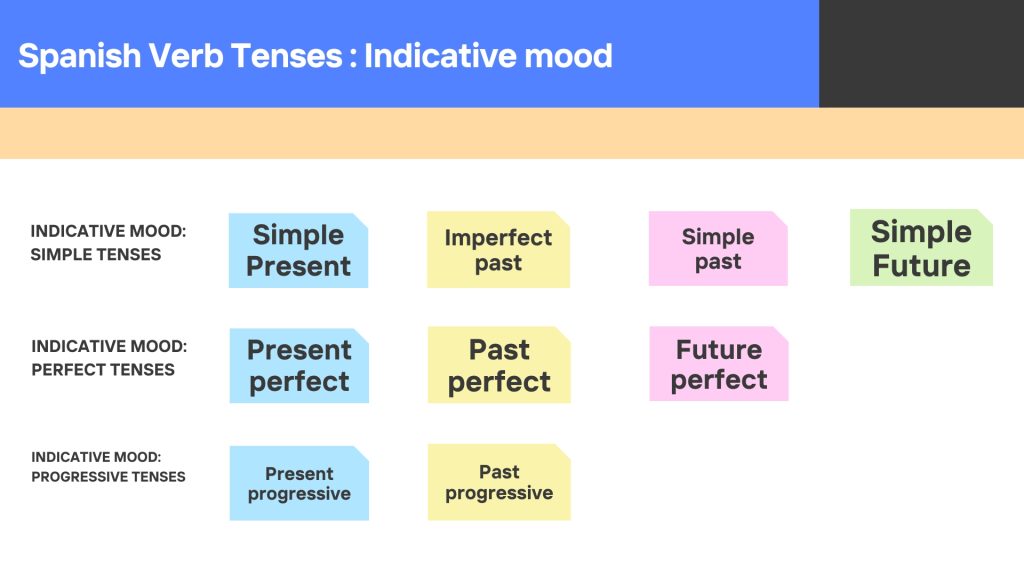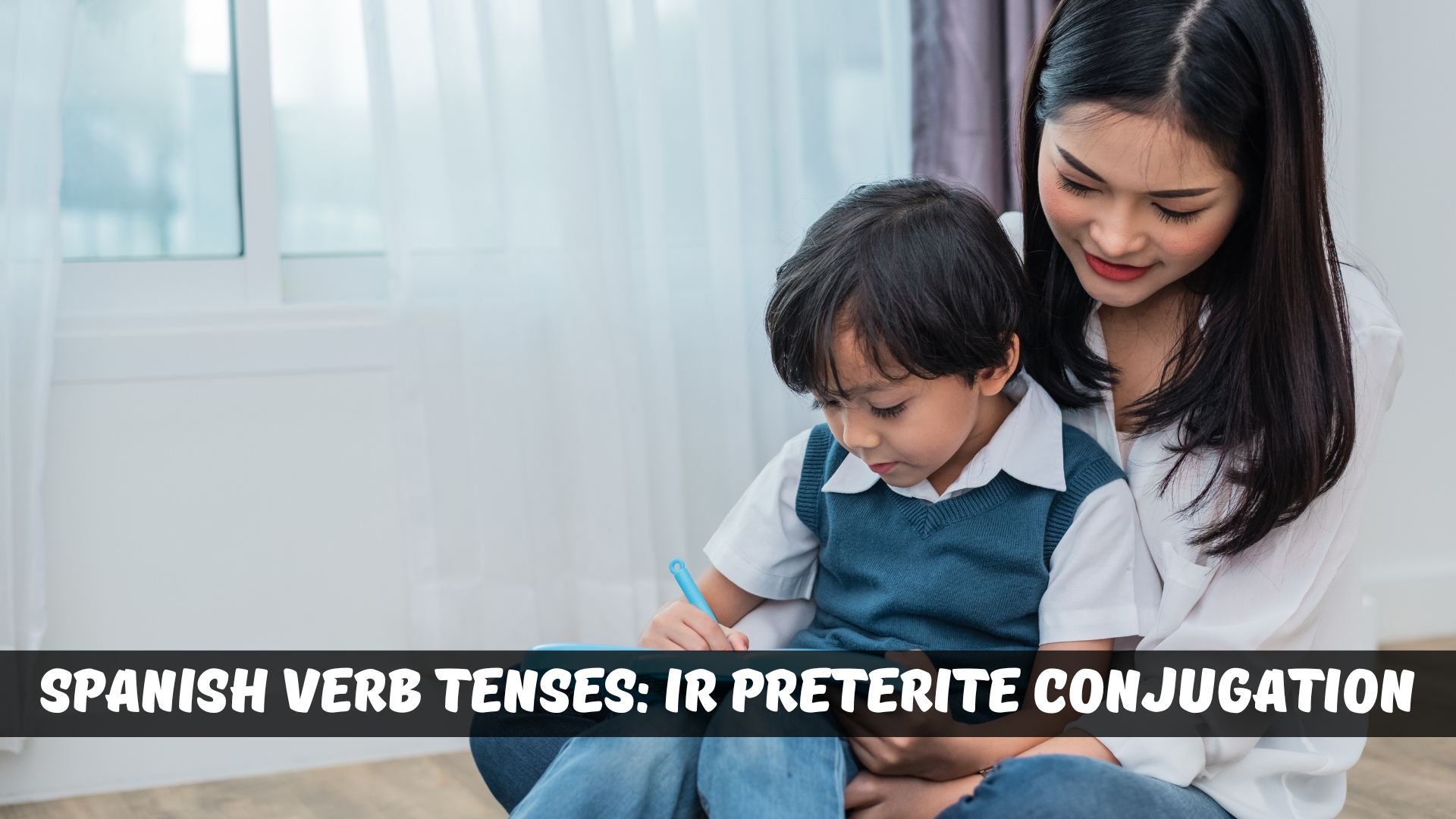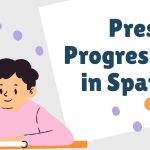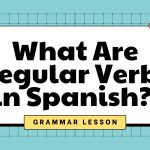Mastering Spanish verb tenses is key to speaking the language well. These tenses include different moods like the indicative, subjunctive, and conditional. Each one helps you express different levels of certainty or possibility.
Let’s break it down a bit. The indicative mood is for stating facts. On the other hand, the subjunctive and conditional moods let you talk about possibilities, wishes, or hypothetical situations.
Now, using these tenses correctly isn’t just about grammar. It’s also about knowing which tense fits the cultural and linguistic context. Knowing when to use each tense can really make your Spanish sound more natural.
So, diving into these verb tenses isn’t just academic. It’s a practical way to sharpen your communication skills in Spanish. It’s definitely worth exploring and discussing as you learn.
All the Spanish Verb Tenses
Knowing all the Spanish verb tenses really helps you get good at both writing and talking in Spanish. It lets you clearly share your thoughts, feelings, and actions, no matter when they happen.
When you know how to use these tenses right, you can talk about sure things or doubts, give orders, or imagine ‘what if’ situations.
How many tenses are there in Spanish?
Spanish has fourteen different verb tenses. They help you say when something happens and how sure you are about it. Getting good at these tenses means you can speak and write Spanish well. Each one has its own rules on when to use it.

Indicative mood
The indicative mood in Spanish is for stating facts and describing reality. It’s essential for everyday talk.
This mood covers different tenses to express events happening now, in the past, or in the future. It helps people be clear when they’re sure about something.
Since it’s used so much in both speaking and writing, its role in clear and direct communication is crucial.
Indicative mood: Simple tenses
In Spanish, the indicative mood has simple tenses like the present, imperfect past, simple past, and future. These tenses help us talk about facts and real situations.
It’s important to know how to conjugate these verbs and when to use them. This makes sure we can express ourselves clearly and accurately in Spanish.
| Tense | Usage | Example Sentence |
|---|---|---|
| Present (Presente) | Talks about actions happening now | Yo como manzanas. (I eat apples.) |
| Preterite (Pretérito) | Describes completed past actions | Ayer estudié español. (Yesterday, I studied Spanish.) |
| Imperfect (Imperfecto) | Refers to habitual past actions | Cuando era niño, jugaba mucho. (When I was a child, I used to play a lot.) |
| Future (Futuro) | Talks about actions that will happen | Mañana viajaré a México. (Tomorrow, I will travel to Mexico.) |
| Conditional (Condicional) | Expresses hypothetical situations | Yo compraría un coche nuevo. (I would buy a new car.) |
Present
The present tense helps us talk about what’s happening now or what always happens. For example, when we say ‘I speak,’ we use the present tense. It’s perfect for sharing what we think, how we feel, or facts that don’t change.
This makes it very useful for everyday chats. It’s like having a tool that helps us describe our daily lives, from what we do every morning to what we believe in.
Imperfect past
The imperfect past tense in Spanish is all about regular or ongoing past actions. It doesn’t pin down when things started or finished. Instead, this tense is great for talking about repeated actions or setting the scene in stories.
It’s also useful for describing how things were in the past, like someone’s age, their feelings, or the weather during a certain time.
Simple past
In Spanish, the simple past tense, or the preterite, is for actions that happened at a specific time. It’s used to talk about things that started and finished, not things that keep going or happen often. To use it right, knowing how to conjugate verbs, both the regular and the tricky ones, is key.
Future
In Spanish, when you talk about the future in the indicative mood, you’re discussing things that will happen or that you expect to happen. It’s useful for talking about what’s coming up, making predictions, or sharing what you plan to do. This way of using the future tense helps us outline our expectations and plans, focusing on the events we see on the horizon.
Indicative mood simple tense conjugation
Spanish verbs in the indicative mood are pretty straightforward. They describe things that are certain, like facts. You’ve got different tenses like the present, preterite, imperfect, and future. Each one fits a different time frame and type of action.
For example, ongoing actions, things that have already happened, stuff we do regularly, or what we expect to happen. This helps us talk about everyday things clearly and directly.
In the indicative mood, perfect tenses help us talk about things that are finished, whether just now, in the past, or in the future. We use the auxiliary verb ‘haber’ plus a past participle.
The only change is how ‘haber’ is conjugated. This helps us be clear about when something was completed.
| Tense | Singular | Plural |
|---|---|---|
| Present | hablo, hablas, habla | hablamos, habláis, hablan |
| Preterite | hablé, hablaste, habló | hablamos, hablasteis, hablaron |
| Imperfect | hablaba, hablabas, hablaba | hablábamos, hablabais, hablaban |
| Future | hablaré, hablarás, hablará | hablaremos, hablaréis, hablarán |
| Conditional | hablaría, hablarías, hablaría | hablaríamos, hablaríais, hablarían |
Present perfect
The Present Perfect tense in Spanish helps talk about things that have just happened or matter now. You make it with the helping verb ‘haber’ and a past participle.
It’s useful for sharing experiences or changes that affect today. For instance, ‘He visitado España’ means ‘I have visited Spain.’ This shows how the visit plays a role in the current moment.
Past perfect
The Past Perfect tense in Spanish, called ‘el pretérito perfecto compuesto,’ is used to talk about things that were finished before another time in the past. You make it by using the auxiliary verb ‘haber’ in its imperfect form (había, habías, había, habíamos, habíais, habían) together with the past participle of the main verb.
Future perfect
Let’s dive into the Future Perfect tense after looking at past tenses. This tense helps us talk about actions that will be finished by a certain time in the future. It’s really useful when you’re talking about deadlines or when you expect something to be done.
Test your knowledge with our Spanish conditional tense quiz.
Indicative mood perfect tense conjugation
Perfect tenses in the indicative mood help us talk about things we’ve finished at a certain time. We use the helper verb ‘haber’ and add a past participle to it. For instance, when you say ‘he comido,’ it means you’ve just finished eating. On the other hand, ‘había estudiado’ tells someone you had finished studying before something else happened.
| Tense | Singular | Plural |
|---|---|---|
| Present Perfect | he comido, has comido, ha comido | hemos comido, habéis comido, han comido |
| Past Perfect | había comido, habías comido, había comido | habíamos comido, habíais comido, habían comido |
| Future Perfect | habré comido, habrás comido, habrá comido | habremos comido, habréis comido, habrán comido |
Indicative mood: Progressive tenses
In the indicative mood, progressive tenses help show actions that are happening now or happened before. You form the present progressive by combining the present tense of ‘estar’ with a gerund. For the past progressive, you use the imperfect tense of ‘estar’. It’s important to get these conjugations right to clearly express ongoing actions in Spanish.
| Tense | Formation | Example |
|---|---|---|
| Present Progressive | estar (present) + gerund (-ando/-iendo) | Estoy escribiendo. (I am writing.) |
| Past Progressive | estar (imperfect) + gerund (-ando/-iendo) | Estaba escribiendo. (I was writing.) |
| Future Progressive | estar (future) + gerund (-ando/-iendo) | Estaré escribiendo. (I will be writing.) |
Present progressive
In Spanish, when you want to talk about something that’s happening right now, you use the present progressive tense. It’s pretty straightforward.
You just take the verb ‘estar’ and add the gerund, or the -ing form, of the main verb. For instance, ‘estoy hablando’ means ‘I am speaking.’
This way of putting it really highlights that the action is in the middle of happening—it’s ongoing as we speak.
Past progressive
The past progressive tense helps us talk about things that were happening at a certain time in the past. It’s useful for showing ongoing actions and setting the scene in stories.
When you use this tense, you can make the past feel alive, as if the events are unfolding right before your eyes. It’s like painting a picture where the main actions are clear, but there’s also something happening in the background.
This makes your storytelling richer and more engaging.
Indicative mood progressive tense conjugation
Progressive tenses show actions that are happening right now.
You use the verb ‘estar’ plus another verb ending in ‘-ing.’
For instance, ‘estoy hablando’ translates to ‘I am speaking.’
This way of speaking highlights that the action is ongoing, like capturing a moment when something is actively happening.
| Tense | Singular | Plural |
|---|---|---|
| Present | estoy leyendo, estás leyendo, está leyendo | estamos leyendo, estáis leyendo, están leyendo |
| Past | estaba leyendo, estabas leyendo, estaba leyendo | estábamos leyendo, estabais leyendo, estaban leyendo |
| Future | estaré leyendo, estarás leyendo, estará leyendo | estaremos leyendo, estaréis leyendo, estarán leyendo |
Subjunctive mood
The subjunctive mood in Spanish is really important if you want to express uncertainty, wishes, or hypotheticals. It kicks in with certain phrases and is key to showing feelings, doubts, or when you’re being polite.
To speak Spanish well, you need to get the hang of this. It’s a big part of communicating clearly in the language.
Subjunctive mood: Simple tenses
In Spanish, the subjunctive mood is crucial when we talk about things we’re not sure about or really want to happen. It’s less about what is and more about what might be or what we wish were true.
When we delve into the simple tenses of the subjunctive, like the present and imperfect, things get interesting. We use the present subjunctive for things happening now or soon, and the imperfect for things in the past that still affect our wishes or guesses today.
Let’s break it down. Say you’re hoping someone will visit. You’d use the present subjunctive to express that hope. But if you’re talking about a wish you had in the past that still matters—maybe you wished you had studied harder in school—that’s where the imperfect subjunctive comes in. It connects past hopes to your current feelings or situations.
| Tense | Singular | Plural |
|---|---|---|
| Present | tenga, tengas, tenga | tengamos, tengáis, tengan |
| Imperfect (Option 1) | tuviera, tuvieras, tuviera | tuviéramos, tuvierais, tuvieran |
| Future | tuviere, tuvieres, tuviere | tuviéremos, tuviereis, tuvieren |
Present subjunctive
The present subjunctive in Spanish helps us talk about things we’re not sure about, or things we wish could happen.
It’s used with phrases like ‘esperar que’ (hoping that), ‘dudar que’ (doubting that), or ‘querer que’ (wanting that).
Unlike the usual way of conjugating verbs, the subjunctive changes a bit to show that we’re talking about something uncertain or wished for.
Imperfect subjunctive
The imperfect subjunctive in Spanish dives into the world of ‘what could have been.’ It’s like the present subjunctive’s cousin, but it deals with the past. You use it to talk about doubts, desires, or emotions tied to things that have already happened.
Think of phrases like ‘if only’ (ojalá), ‘if’ (si), and ‘as if’ (como si). These phrases are your cue to switch into the imperfect subjunctive. It’s crucial to get the hang of how to conjugate these forms right, so you can say exactly what you mean.
Subjunctive mood: Perfect tenses
The perfect tenses of the subjunctive mood in Spanish are really useful for talking about things that happened in the past but still matter now, or might affect the future. Think about emotions, doubts, or guesses. We’ve got the present perfect subjunctive and the past perfect subjunctive to help us out.
The present perfect subjunctive lets you talk about past actions that are still important. For example, you might use it to say that it’s good that someone did something, even if it was a while ago. The past perfect subjunctive is for imagining what could have happened but didn’t. It’s great for those “what if” thoughts.
Getting these conjugations right really helps you express more complex ideas in Spanish. It’s like adding more colors to your palette when you paint.
| Tense | Singular | Plural |
|---|---|---|
| Present Perfect | haya hecho, hayas hecho, haya hecho | hayamos hecho, hayáis hecho, hayan hecho |
| Past Perfect | hubiera hecho, hubieras hecho, hubiera hecho | hubiéramos hecho, hubierais hecho, hubieran hecho |
| Future Perfect | hubiere hecho, hubieres hecho, hubiere hecho | hubiéremos hecho, hubiereis hecho, hubieren hecho |
Present perfect subjunctive
To get the hang of talking about past events that still matter now or soon in Spanish, you really need to get the present perfect subjunctive down.
You make it by using the subjunctive form of ‘haber’ and adding the past participle of the verb.
It’s key for when you’re not sure about things or when you’re feeling something about stuff that happened before but still affects today.
Past perfect subjunctive
We’ve already talked about the present perfect subjunctive.
Let’s shift gears to the past perfect subjunctive.
This tense is about discussing things that didn’t happen in the past but could have under different circumstances.
It’s a way to think about ‘what if’ scenarios and consider the outcomes that might have been.
It adds a rich layer to how we think about past events and possibilities.
Subjunctive mood conjugations
When looking at the perfect tenses in the subjunctive mood, Spanish uses these to talk about ‘what ifs’ that link back to the past.
You use the subjunctive form of ‘haber’ (like haya, hayas, hayamos) and mix it with the past participle of the main verb.
This way of speaking is really useful when you’re talking about things that might have happened and how they make you feel or influence your thoughts.
Imperative mood
The imperative mood is crucial in Spanish. It helps people give commands or make requests. Knowing how to conjugate it correctly is key to communicating clearly, whether you’re giving an order or just suggesting something politely.
Let’s dive into the different forms of the imperative. We’ll look at how positive and negative commands change depending on who you’re talking to.
Imperative mood conjugations
In Spanish, you use the imperative mood to tell someone what to do, ask for something, or give advice. The way you conjugate verbs varies depending on who you’re talking to—like using ‘tú,’ ‘usted,’ ‘nosotros,’ or ‘vosotros.’
For ‘tú’ and ‘vosotros,’ affirmative commands change a bit from the present tense. But if you’re giving a negative command, you need to use the subjunctive mood.
Getting these right helps you give clear instructions or suggestions.
| Subject | Affirmative Command | Negative Command |
|---|---|---|
| Tú | di | no digas |
| Usted | diga | no diga |
| Nosotros | digamos | no digamos |
| Vosotros | decid | no digáis |
| Ustedes | digan | no digan |
Conditional mood
The conditional mood in Spanish is key for talking about what could happen or what we might do. It mostly sticks to a simple pattern: you add special endings to the basic form of the verb. Once you get this down, it’s pretty straightforward. Learning these endings helps you discuss what-ifs and ask for things politely.
Conditional mood conjugations
Conditional mood in Spanish talks about what could happen or what might have been. It adds endings like -ía, -ías, -ía, -íamos, -íais, -ían to the base form of a verb.
For instance, ‘hablaría’ means ‘I would talk’ and ‘comerían’ means ‘they would eat.’ This way, we can chat about what could occur under certain conditions or in imaginary situations.
| Tense | Singular | Plural |
|---|---|---|
| Simple Conditional | viviría, vivirías, viviría | viviríamos, viviríais, vivirían |
| Conditional Perfect | habría vivido, habrías vivido, habría vivido | habríamos vivido, habríais vivido, habrían vivido |
Examples with all Spanish verb tenses
To show how Spanish verb tenses work, let’s use the verb ‘viajar’ (to travel) in different situations. If we’re talking about now, we say ‘viajo’. For something that was happening repeatedly in the past, it’s ‘viajaba’. A single event that happened once in the past? That’s ‘viajé’. Looking to the future, we’ll use ‘viajaré’.
Now, if we’re imagining or wishing something about traveling, we might use ‘viaje’ in a more wishful, subjunctive mood. And if we’re talking about what would happen under certain conditions, we’d say ‘viajaría’.
Each of these tenses changes how we understand the time and likelihood of the travel. It’s like picking the right gear for your car depending on the road you’re on.
| Category | Tense & Example Verb | Example Sentence |
|---|---|---|
| Indicative Mood: Simple Tenses | Present (Hablar) → Yo hablo | Yo hablo español todos los días. (I speak Spanish every day.) |
| Preterite (Comer) → Yo comí | Ayer comí pizza. (Yesterday, I ate pizza.) | |
| Imperfect (Vivir) → Yo vivía | Cuando era niño, vivía en Madrid. (When I was a child, I lived in Madrid.) | |
| Indicative Mood: Simple Tense Conjugation | Future (Escribir) → Yo escribiré | Mañana escribiré una carta. (Tomorrow, I will write a letter.) |
| Conditional (Jugar) → Yo jugaría | Si tuviera tiempo, jugaría fútbol. (If I had time, I would play soccer.) | |
| Indicative Mood: Perfect Tense Conjugation | Present Perfect (Leer) → He leído | He leído ese libro. (I have read that book.) |
| Past Perfect (Hacer) → Había hecho | Ya había hecho mi tarea antes de salir. (I had already done my homework before going out.) | |
| Future Perfect (Ver) → Habré visto | Para mañana, habré visto la película. (By tomorrow, I will have watched the movie.) | |
| Indicative Mood: Progressive Tenses | Present Progressive (Correr) → Estoy corriendo | Estoy corriendo en el parque. (I am running in the park.) |
| Past Progressive (Estudiar) → Estaba estudiando | Estaba estudiando cuando llamaste. (I was studying when you called.) | |
| Future Progressive (Trabajar) → Estaré trabajando | Estaré trabajando a esa hora. (I will be working at that time.) | |
| Indicative Mood: Progressive Tense Conjugation | Conditional Progressive (Dormir) → Estaría durmiendo | Si no fuera por el ruido, estaría durmiendo. (If it weren’t for the noise, I would be sleeping.) |
| Subjunctive Mood: Simple Tenses | Present (Ser) → Sea | Espero que ella sea feliz. (I hope she is happy.) |
| Imperfect (Tener) → Tuviera | Ojalá tuviera más dinero. (I wish I had more money.) | |
| Subjunctive Mood: Perfect Tenses | Present Perfect (Ir) → Haya ido | Dudo que haya ido a la fiesta. (I doubt he has gone to the party.) |
| Past Perfect (Decir) → Hubiera dicho | Ojalá me lo hubiera dicho antes. (I wish he had told me before.) | |
| Imperative Mood Conjugations | Affirmative Tú (Venir) → Ven | ¡Ven aquí rápido! (Come here quickly!) |
| Negative Tú (Hablar) → No hables | No hables tan alto. (Don’t speak so loudly.) | |
| Conditional Mood Conjugations | Simple Conditional (Gustar) → Me gustaría | Me gustaría viajar a España. (I would like to travel to Spain.) |
| Conditional Perfect (Aprender) → Habría aprendido | Si hubiera estudiado más, habría aprendido mejor. (If I had studied more, I would have learned better.) |
Conclusion
To wrap it up, knowing Spanish verb tenses well is key to clear and detailed communication. These tenses include the indicative, subjunctive, imperative, and conditional forms. They help you express a wide range of ideas—from real facts to what-ifs and orders.
Getting good at these tenses lets you share thoughts on certainty, possibilities, desires, or actions in progress. This skill makes conversations richer and helps you understand and connect better in Spanish-speaking settings.
Learn a new language with expert guidance at Lingua Viva.
Carolina is a charming and lively member of Lingua Viva with 11+ years of teaching experience. She loves to teach students appropriate ways to communicate effectively in Spanish without the fear of making mistakes. She holds a professional teaching license and has a graduate degree with emphasis in Foreign Language.











